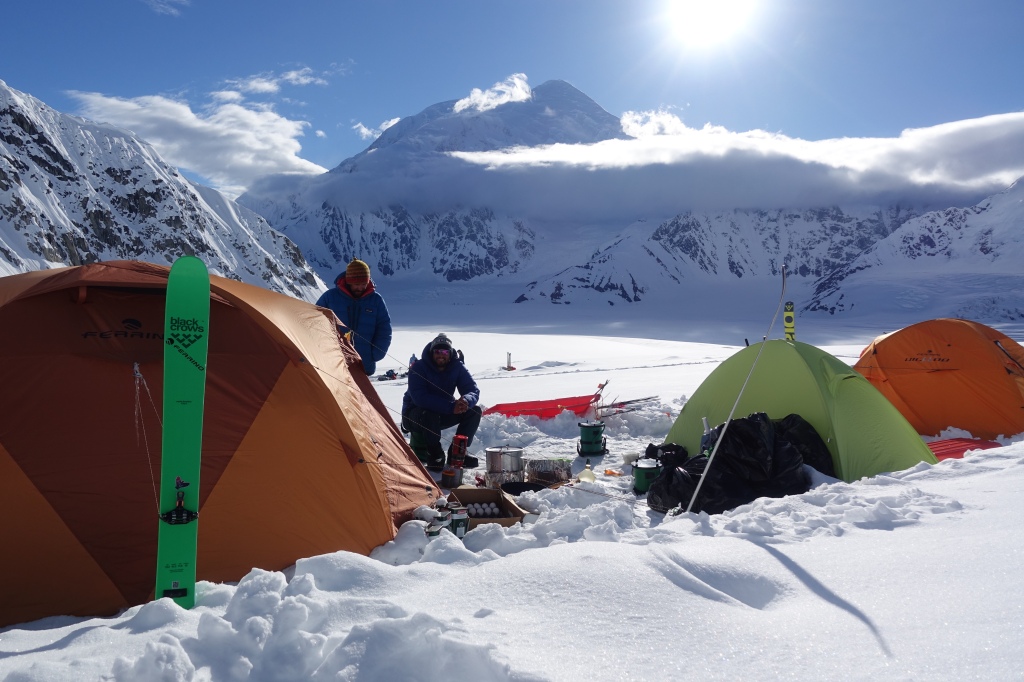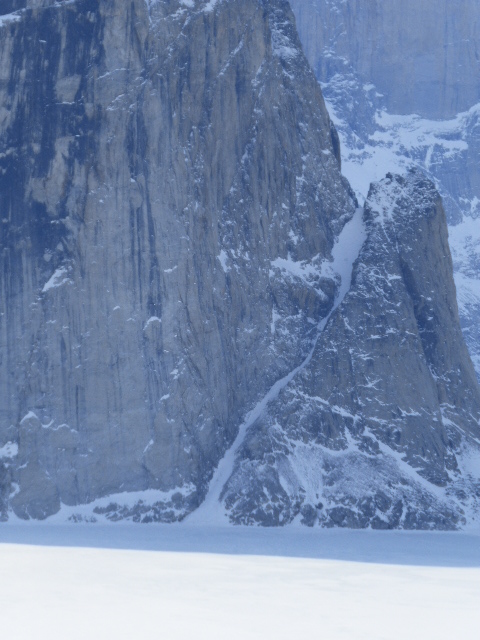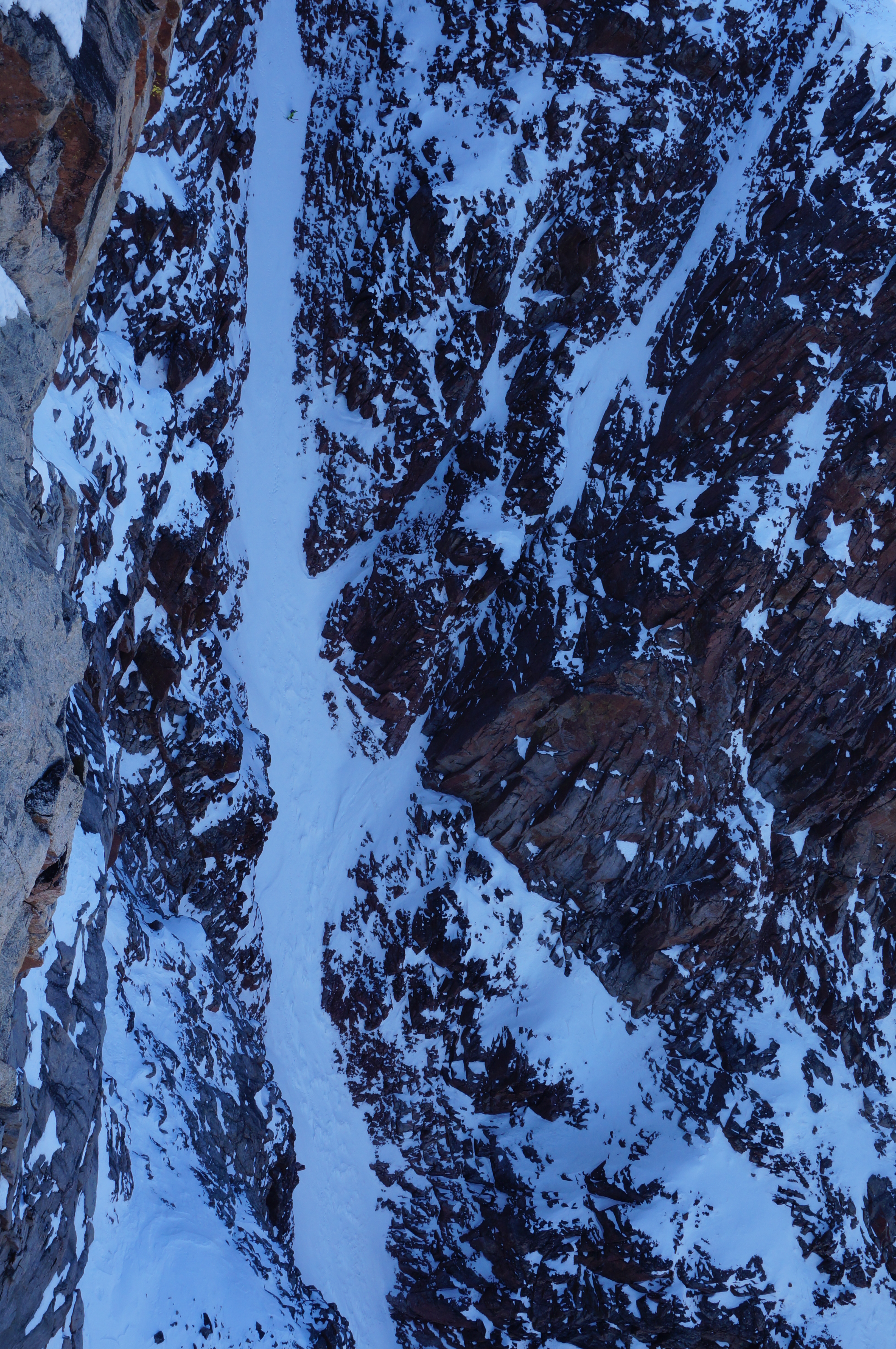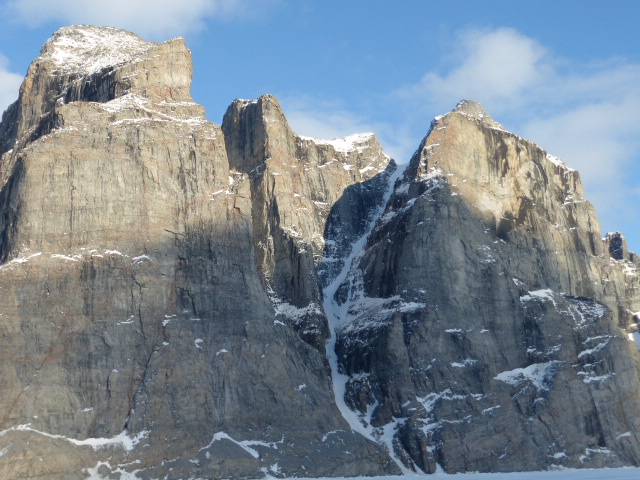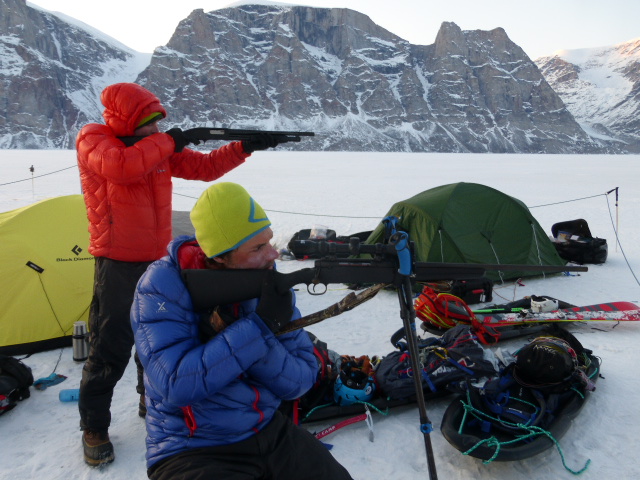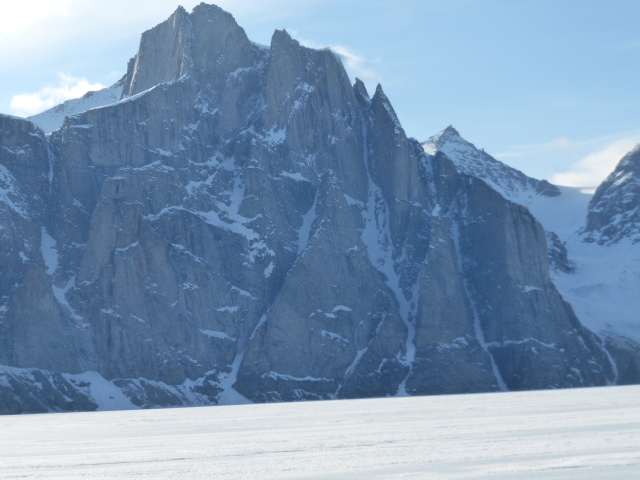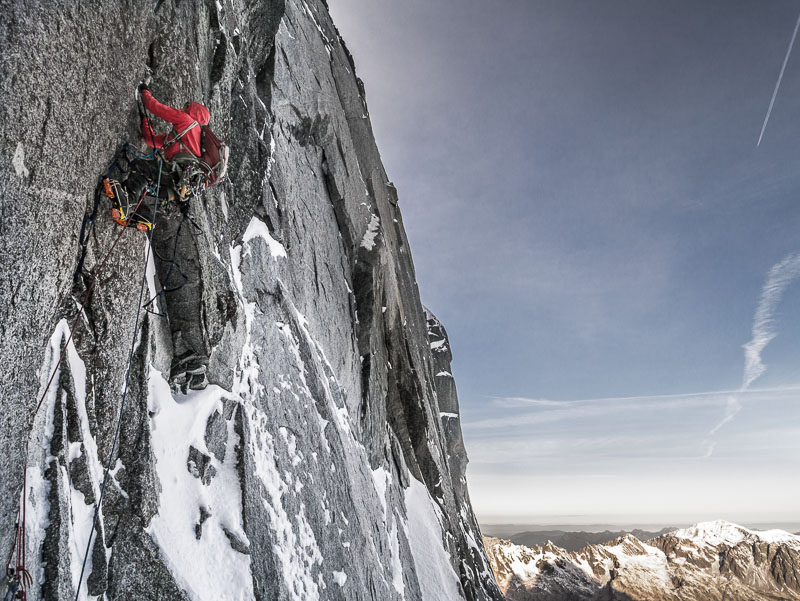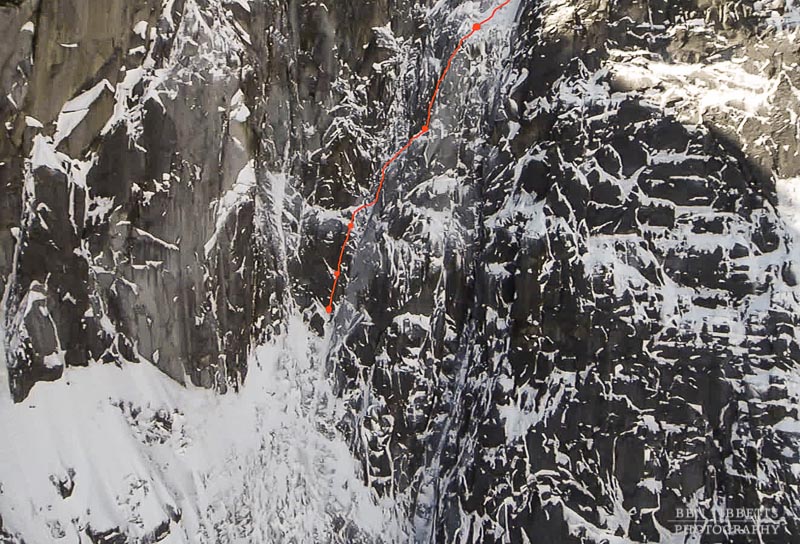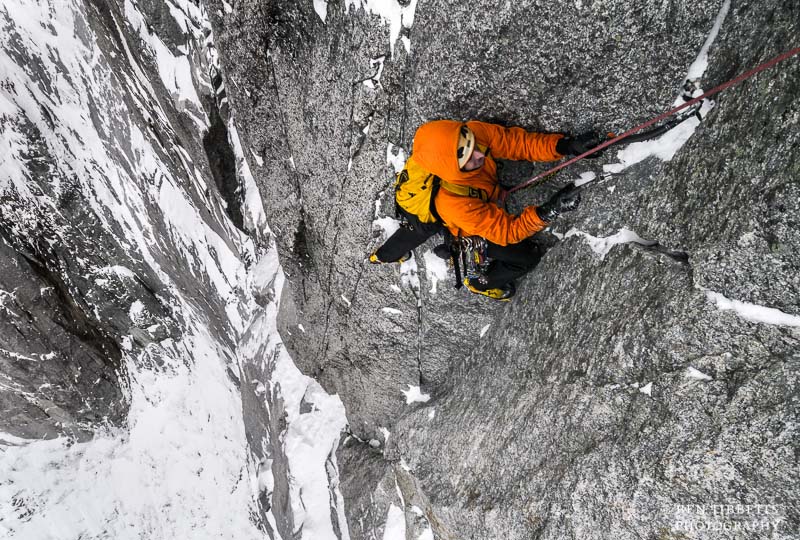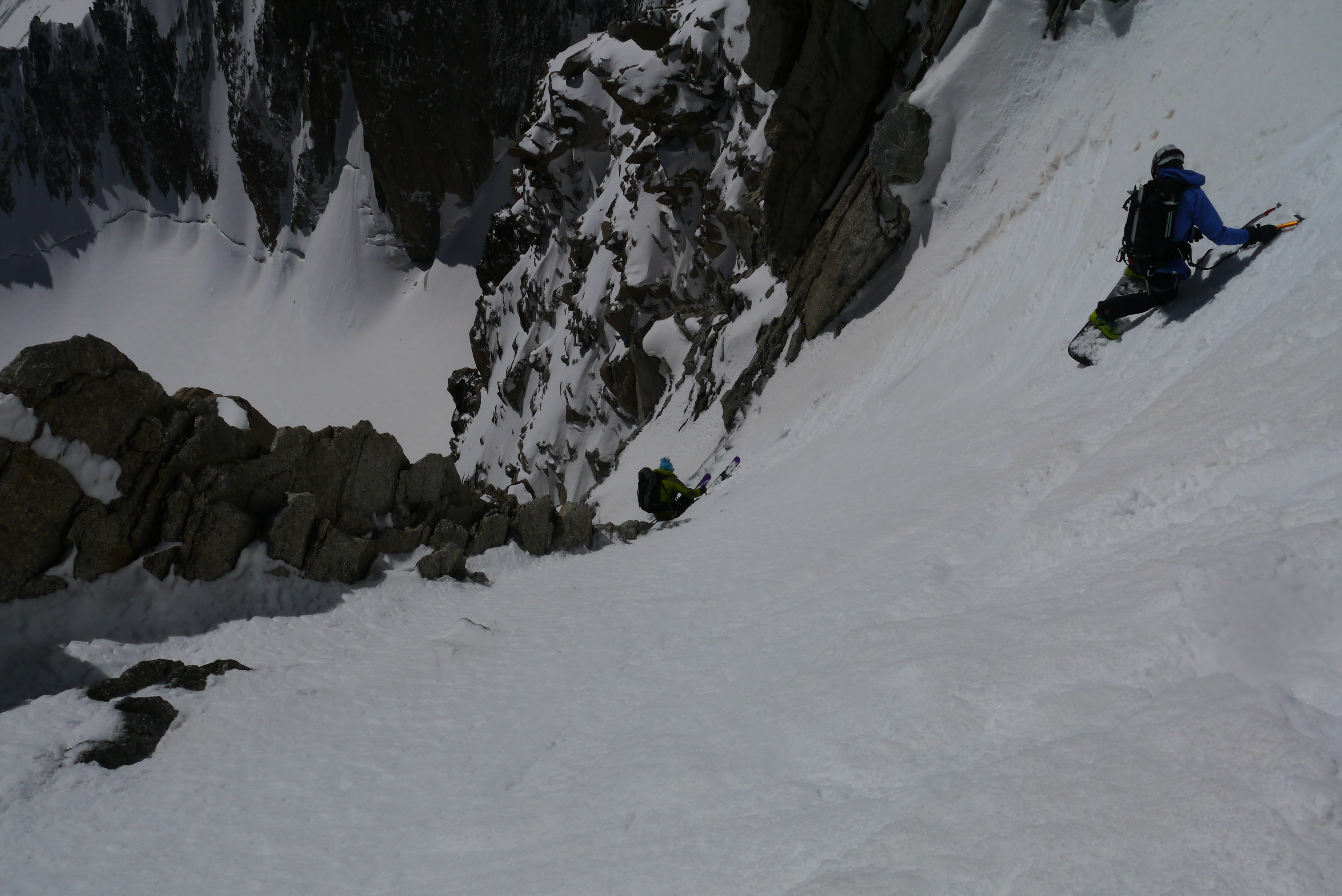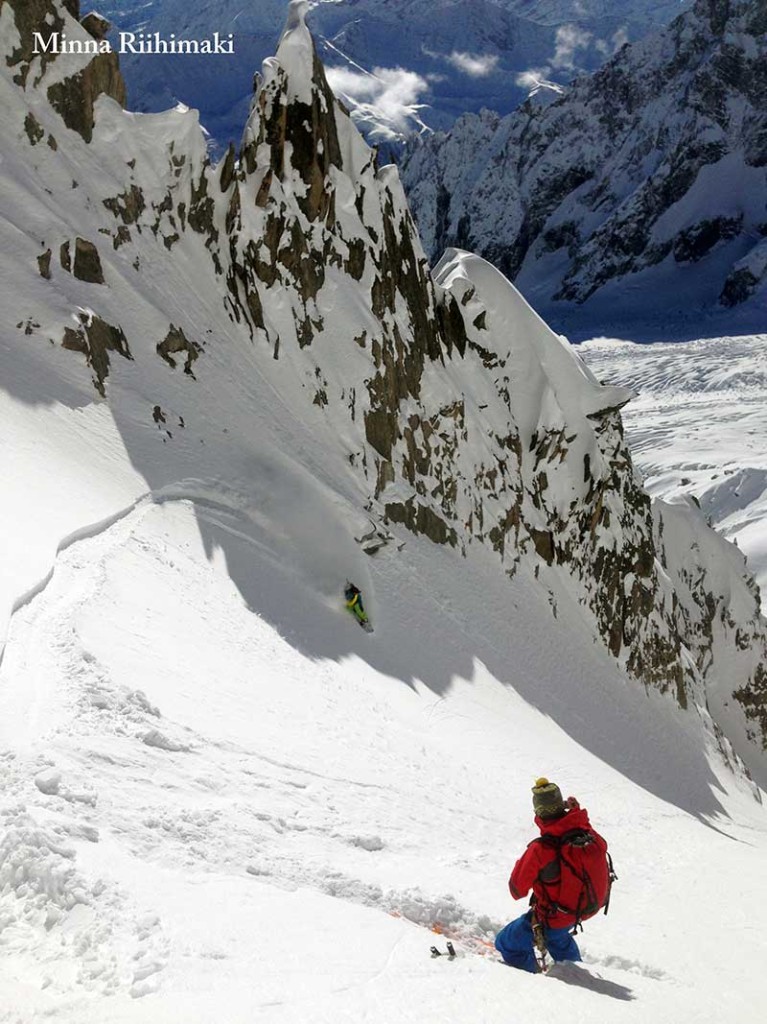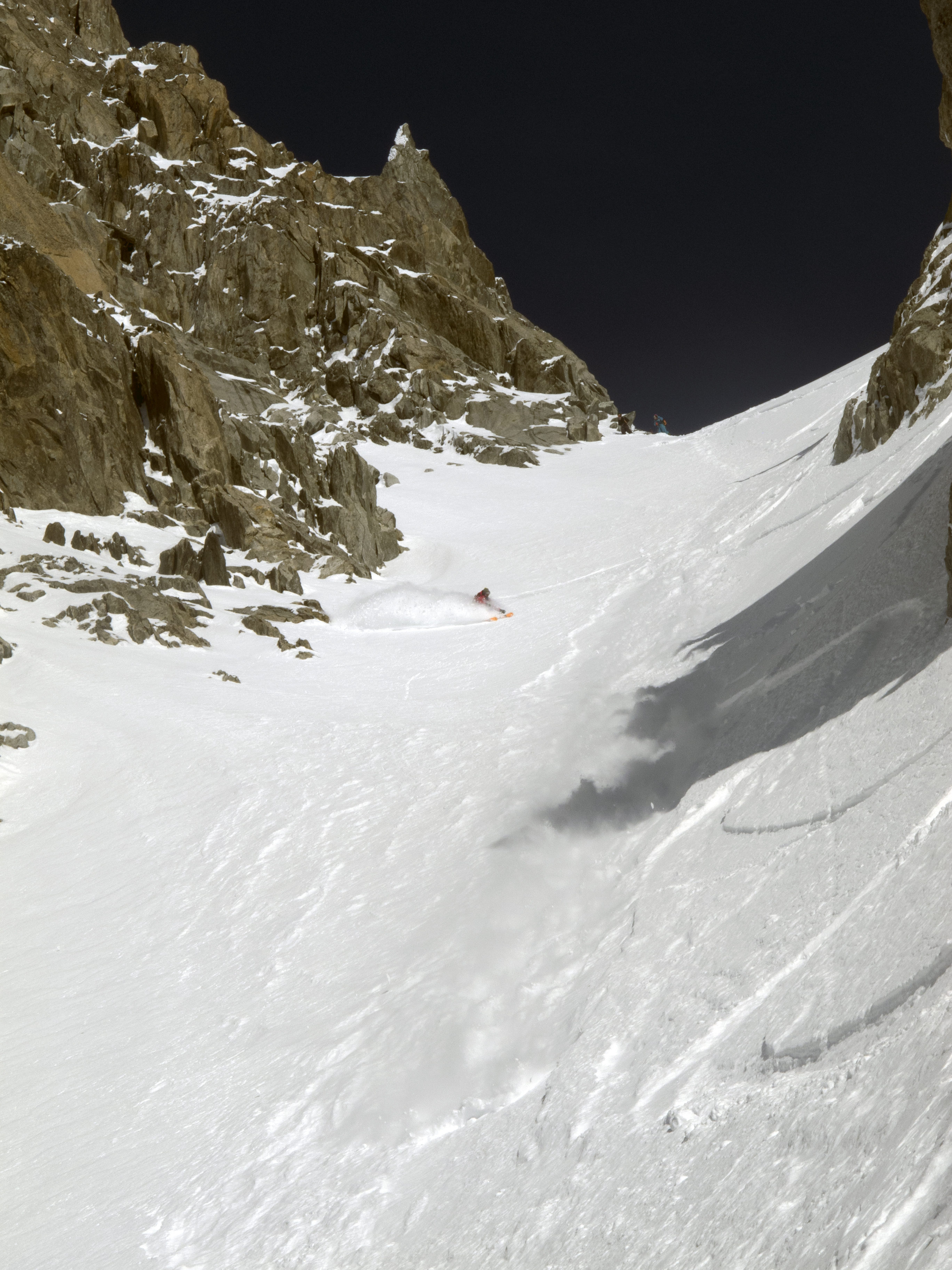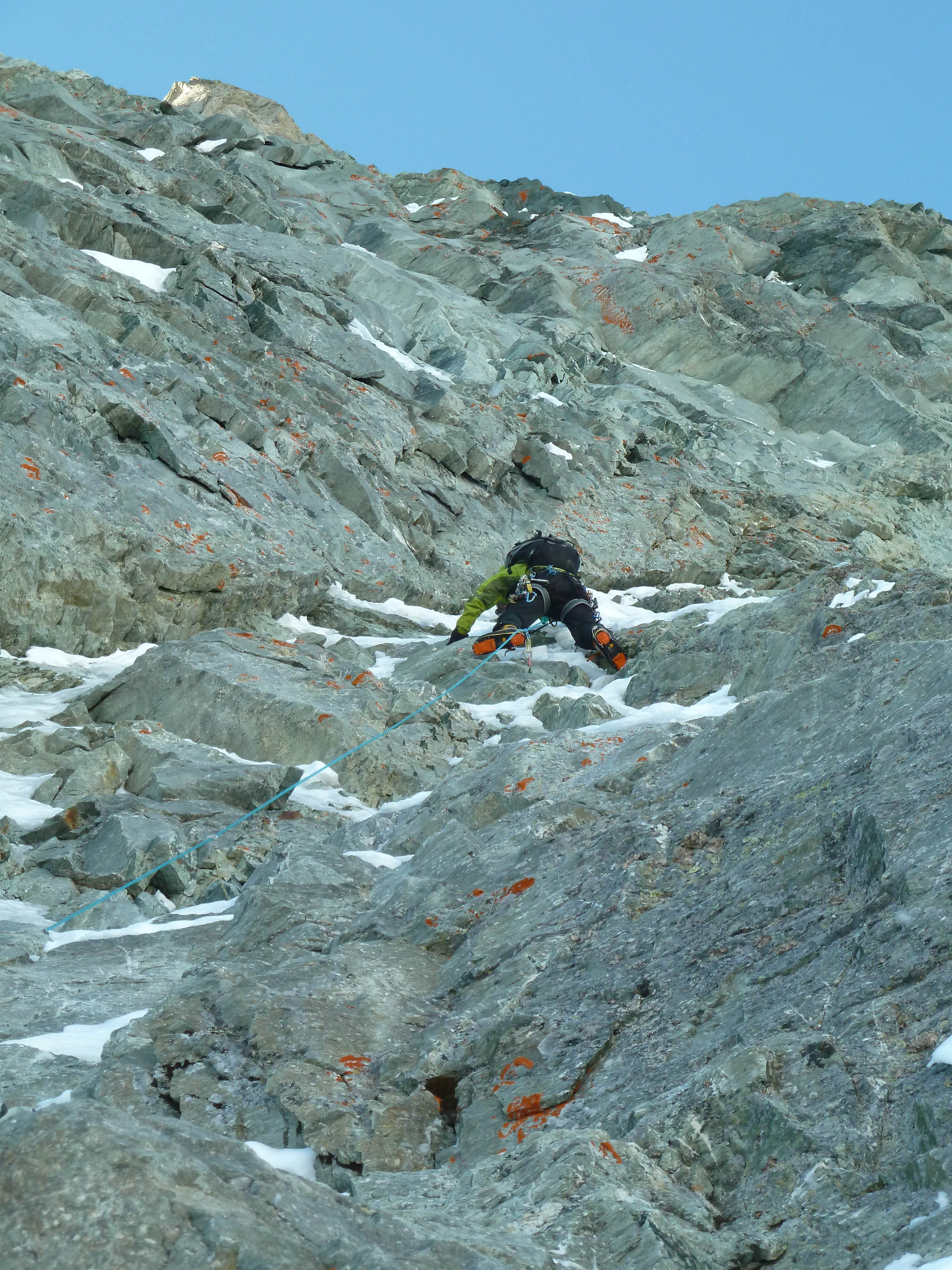In May of this year I gathered three of my most trusted ski buddies for a journey to Alaska where we wanted to see if our expertise from skiing steep descents in the Alps and around the world could be applied to the biggest lines Alaska has to offer. Our first trip to the Central Alaska Range was a humbling experience where reward was mixed with frustration and where we almost lost one of our team.
2018 didn’t start off well for me. At the beginning of what was to be an epic winter I tore my ACL. It was the first major injury I’d sustained since skiing almost full time over 10 years and I didn’t take it very well but I had a burning determination to come back stronger. For 6 months of each year skiing is an all-consuming passion for me and guiding is my profession. I knew it meant a fairly lengthy break from both. My good ski buddy and prolific steep skier Jesper Peterson had been through the same gruelling recovery process the year before. Jesper’s support and encouragement was a big moral boost during my rehab and when he proposed a trip together to Alaska for the following spring, I knew I was in.
It can be hard to leave the Chamonix ski scene especially in spring when the more ephemeral lines come into condition. But I was hungry for a big adventure, the type of adventure that the Alps can’t quite provide. We invited Ben Briggs and Enrico Mossetti to round off an experienced team. Ben, Enrico and I had skied the first descent of the Caroline Face of Mt. Cook on our last trip together in 2017, one of the world’s biggest unskied lines. I knew a trip with these three good friends would mean our sights would likely be set on some fairly ambitious ski mountaineering objectives.
I think travel to uncomfortable places is important in order to keep growing as an athlete and a person. The Central Alaska Range was certainly the right place to take all four of us outside our comfort zones. Denali is a mind blowingly huge mountain renowned for its extreme cold, harsh weather and severely thin air. Flying in from the remote outpost of Talkeetna on the edge of the Alaska Range, our first glimpses of Denali filled us with awe and trepidation. Towering above the other colossal peaks of Alaska Range, Denali is a freak geological phenomenon. It’s 3,000 meter south face is a well-known ski mountaineering challenge and is one of the very biggest steep ski lines in the world, cutting through an alpine face of mythical stature. We decided this was would be on the table to as an option to try. It was first skied solo by the ground-breaking Swedish skier Andreas Fransson in 2011 and since then we hadn’t heard of any other teams attempting it. Our other plan involved attempting a very complex but compelling looking line on the unskied north side of Mt. Hunter, which is conveniently in plain sight directly above basecamp.
We arrived in basecamp and fried some eggs for lunch while staring at Hunter and to finally deciding where we were going to focus on. The line on Hunter looked simply too dangerous and conditions were worse than what we had seen in photos from previous years. We decided to load our sleds with two weeks’ worth of supplies and start the long slog up Denali, hauling our heavy sleds up the mountain for three days. This was not something any of us were accustomed to. However, I secretly enjoyed the simplicity of the physical toil while we all had a thorough complain to one and other. It felt as though we were moving up the mountain at a snail’s pace until we realized we were moving twice the speed of the large guided groups and most other teams who cached supplies along the way.
After setting ourselves up at 14k camp, we waited out a couple of stormy days passing the time playing chess. It was bitterly cold at first, a deep and raw cold in the evening and before the first rays of sun hit the camp. I wondered if my holiday time would have been better spent somewhere a little warmer where we could actually do some skiing. Wrapped up in all my clothes inside my two kilo down sleeping bag, it was difficult to get out and eat breakfast before 10am. Everything froze solid and we had mistakenly neglected to bring a cook tent. On the first day of good weather we headed up the classic Orient Express couloir. Jesper and I pushed our bodies hard to get up to 5,800m only five days after arriving at basecamp. The frustration of the previous days was soon ironed out by the intense physical exertion it took to boot up 1,000m at that altitude and then the bliss of a few good powder turns coming back into camp.
The cold and high winds continued, and I was already thinking maybe my first trip to Denali would be my last. The stable weather we were counting on never came and the enormity and logistical challenges of skiing the South Face weighed heavily on us. We knew it would be a long shot to pull off. Yet, Denali is Denali, and regardless of whether we could ski the South Face I had a burning desire to at least ski from the summit.
Our patience and food supplies began to run thin. At last it seemed as if our window had come and the four of us packed for a three-day roundtrip to attempt the South Face. Moving up the mountain I instinctively felt our bags were too heavy and we weren’t moving fast enough. The wind whipped up well beyond what was forecast, and we ground to a halt.
Ben and Enrico felt the time had come to bail and move back down to basecamp while Jesper and I stayed up one more day with the intention of taking our skis to the summit and skiing the classic Messner Couloir. This time the weather turned out better than predicted with summit temperatures a relatively balmy -25 degree Celsius. It felt a joy to move at a good speed and with lighter packs. Ahead of all the other teams, we had the mountain to ourselves. Some altitude induced pain was nothing compared to the intense pleasure of pushing up the mountain at a decent pace. Jesper and I finally peered into the depths of the South Face as we neared the summit. We were too late in the day to ski it and the weather wasn’t stable enough. The view into the South Face was almost nauseating. It was of a scale I’d never before seen, even compared to the Caroline Face. My ambition to ski it was there but I knew it wasn’t the time for it.

Arriving on the summit I was alone for twenty minutes in near perfect weather. It was a powerful moment to be there alone, and then joined by Jesper. As we stepped into our skis atop North America’s highest mountain, it felt good to share and savour the moment with such a trusted ski partner. Surprisingly, we were able to make a few fast powder turns straight off the summit slopes. Entering the Messner Couloir in evening light was breath-taking. 1,800m vertical of skiing straight back into camp. To be in Alaska and on Denali was a challenge and a new experience for us. But skiing the Messner, one of North America’s biggest classic steep lines was trivial. The snow was of poor quality until two thirds of the way down, but the incredible ambiance of the place made up for it. Skiing back into camp we were amused to be welcomed by whoops and applause from the dozens of other climbers and skiers camped out there who had watched our descent.

Jesper and I were pleased with finally having achieved some success. Yet we also felt slightly cheated that we had not skied anything that really challenged us. We wanted to take our niche steep skiing skillset and apply it to these incredibly big and beautiful mountains. Back in basecamp we were reunited with Ben and Enrico and planned for one last big line.
The 1,000m West Face of Kalhiltna Queen was an obvious target. First skied in 2010 by a French team, it is a stunningly beautiful and technical ski objective. Holed up back in basecamp during two days of sleet and blizzards, we rested up and waited. On the third day we left early for the Kalhiltna Queen. Cramponing up the main couloir of the face at a relatively low 3,000m above sea level, it felt though I had boot packing super-powers. The acclimatisation had paid off and everything seemed to be lining up perfectly. The weather was stable, the snow felt stable, the team was motivated.

As we climbed up higher following airy ridges and spines, I was in rapture at the raw beauty of the place. I felt we were surely going to be ending the trip on a high. Finding a way to the summit through some very steep and exposed terrain with rocks and ice never far under the snow, we planned our descent precisely according to where we placed the boot pack. I had an unshakeable confidence that I could safely ski the line without using the rope.
The skiing from the upper slopes was as engaging and demanding as any descent I’d ever done. Picking a line onto 55 degree spines overhanging an 800m drop I was totally in the zone making turns with the joy of knowing I was beyond any risk of falling, at least not from a technical mistake. This was what we were there for and we were living out a rare and perfect moment.

Jesper and I made our way off the most exposed sections of the upper face and re-joined Enrico who was waiting just below. Continuing down easier terrain, I started to relax. A few careful powder turns later I stopped immediately when I instinctively felt it wasn’t safe to make another turn. A small 10cm deep slab broke off at my ski tips. The temperature had critically started to warm a little. Not sensing any greater danger, I waited as Jesper skied down to me. To my alarm he skied faster than I expected coming in straight below where I had stopped. A small but much deeper slab instantly broke off around his skis. Within less than a second the slab had pushed him backwards into an ice runnel and then rocks.
Moments later he was gone, out of sight having accelerated at an incredible speed down the couloir. I suppressed a rising panic that in all likelihood Jesper was either dead or seriously injured and also some relief that it wasn’t me. I immediately got out my InReach and hit the emergency SOS button, sending a signal to a 24-hour response centre. I prayed it worked and then told Enrico to ski carefully behind me and collect Jesper’s skis in case he wasn’t too badly hurt and needed to ski out to basecamp. Fear and stress flooded my body and no longer finding any flow I skied as fast as possible to get to Jesper. As I was descending it was with huge relief that I saw a distant figure below stumbling around the debris from the small avalanche. I was also afraid of what I would find. Arriving at Jesper I found him badly beaten up, but it seemed that he didn’t have any life-threatening injuries. It was awful to see him in such a state, totally disorientated and in a lot of pain.
Enrico soon came down to us. He tended to Jesper while I raced back to basecamp to round up a rescue party and to see if he could be flown out. I sprinted through camp and to our tents to grab Ben who had decided not to join us that day. Together we skinned up the glacier as fast as we could with a sleeping bag and stove to warm Jesper. Behind us a heavily laden team of volunteer rescue rangers brought up a sled and medical equipment. The heli eventually made it in through a break in the cloud cover and it was with huge relief that we watched Jesper being flown away.
Ben, Enrico and I flew off the glacier the following day and back to civilization. Jesper spent a few days in hospital near Anchorage before getting flown back to Sweden. He sustained a broken neck and ribs but very luckily nothing life changing.
I have an instinctive urge to seek out adventure and risk, yet this urge has been tempered over time with the numbing reality of losing many good friends in the mountains. I have a 7-year-old son and seeking adventure versus not exposing myself to too much risk is a frequent mental push and pull that I’ve become accustomed to. Experience and skill can count for a lot but no matter how much I rationalize with myself the uncomfortable reality is so does luck. Attempting these big lines is the culmination of hard-won experience and dedication to the craft, it requires a level of mental and physical mastery in order to have a satisfying experience which is what attracted me to this trip. And part of the appeal was to simply spend time with three good friends in a wild place.
Things happen fast in the mountains and can go wrong very fast. So often we rely on intuition to make split second decisions that can keep us safe. This intuition is the brain making calculations faster than we can consciously process thoughts and is based on pattern recognition. As skiers this can tell us where to turn, where not to turn, where the snow is safe, where it might be dangerous. But it is not full-proof. The risk can be increased when a skier is away from their home mountains, dealing with the unfamiliar. All we can do is try our best to be humble, self-aware and therefore always be learning. And to keep questioning what it is we are doing and why we are doing it.
I left Alaska with satisfyingly strong experiences that tested my resolve and patience. I was pleased that we’d pushed to new altitudes, learnt how to deal with the cold and made turns on some incredibly beautiful and exposed slopes. Jesper still faces a lengthy recovery from a serious injury, but he will recover. No one needs reminding of how easily it could have been different. The four of us all returned home, and we returned still as friends. That makes it at least a partially successful trip.






